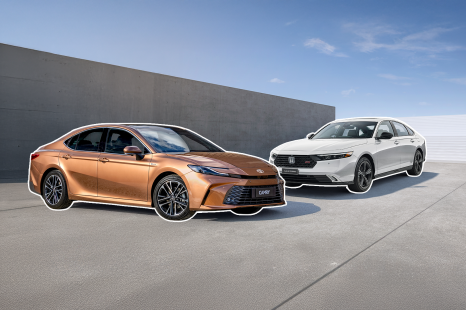

Andrew Maclean
2025 Honda Accord e:HEV RS vs Toyota Camry SL: Spec Battle
3 Months Ago

News Editor
Mazda executives have poured cold water on rumours a next-generation Mazda 6 could use the company’s new rear/all-wheel drive Large Platform.
“All Mazda said was to provide a CX-60, CX-70, CX-80 and CX-90. Just to provide four SUVs,” said Mitsuru Wakiie, program manager for the CX-90, CX-5 and CX-9, through an interpreter.
Wakiie-san is program manager for the CX-90, with each of the other Large Platform models having their own manager who reports to an overall program manager for the platform.
Reports in Japanese media had suggested a Large Platform-based Mazda 6 was in development, but a report from BestCar Web last July said such a model wouldn’t be coming after all.

Such a model would have likely had a more premium positioning than the current car, potentially resulting in a competitive set comprising the Genesis G70 and, in markets where they’re still sold, the Lexus IS and Infiniti Q50.
With the Large Platform not available, that would mean Mazda would have to use an existing front-wheel drive platform or develop a new platform.
The latter seems especially unlikely, given the increasing popularity of SUVs and Mazda’s sharper focus on these. Japan has traditionally been a strong market for sedans but the number of three-box options there from local automakers is shrinking, and China – where the 6 is also manufactured – has been embracing SUVs.

The US, historically a strong market for mid-sized sedans, has also been turning away from them. The Mazda 6 was axed there in 2021, and it’s been part of a significant exodus from the segment there that has included the Ford Fusion and Volkswagen Passat.
All this casts doubt on a successor to the current model, given Mazda has been phasing out the 6 globally. In addition to axing the 6 in Canada and the US in 2021, it was axed in the UK this year and is available only in one variant in New Zealand.
For its part Mazda Australia has committed to offering the current model for as long as possible.

“From our point of view, so long as we make them, and so long as there’s a customer base that says it’s my choice, then it’s our job to make it available,” said Mazda Australia managing director Vinesh Bhindi.
The mid-sized sedan and wagon range received a series of tweaks for 2023, headlined by a special 20th Anniversary edition model celebrating three generations of the nameplate.
Touring and up get wireless Apple CarPlay, albeit still with the old 8.0-inch touchscreen infotainment system running MZD-Connect, while GT SP and Atenza models get the brand’s Cruising and Traffic Support semi-autonomous assistance system.
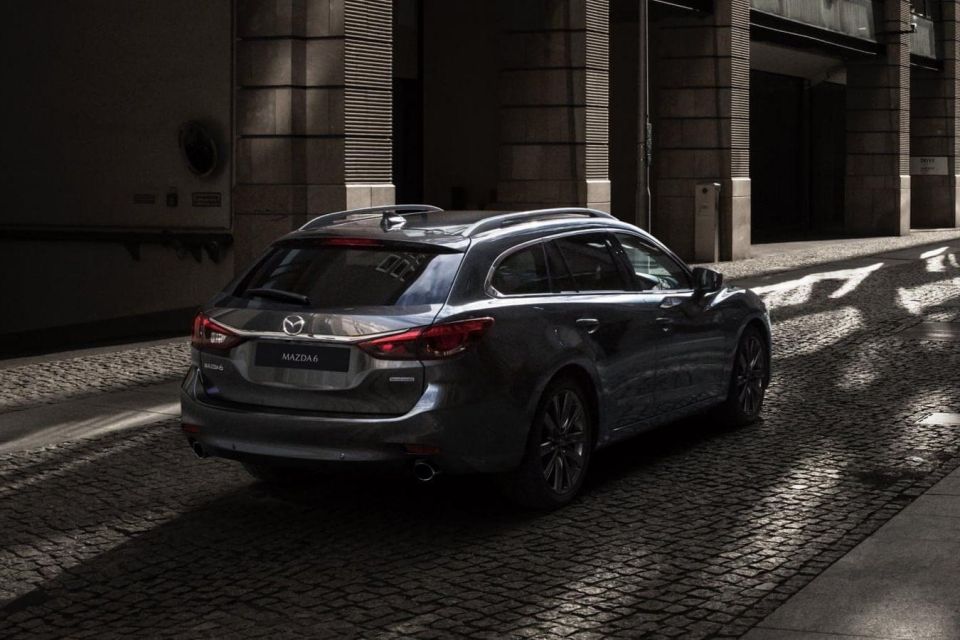
Mazda also says the six-speed automatic has also been updated to “provide a more direct upshift response and exciting driving feel” while the “reactive force of the accelerator pedal has been increased to provide more direct and intuitive connection to the engine’s torque”.
The wider range also gets an updated power steering system for 2023, while variants with the turbocharged 2.5-litre four-cylinder engine get a 3kW bump in power, bringing the total output to 173kW.
We’re one of the vanishing few markets to still get the turbocharged engine, along with New Zealand. It was just discontinued in Japan, though that market still receives the 2.2-litre twin-turbo diesel, along with an all-wheel drive option never offered here in the third-generation 6.
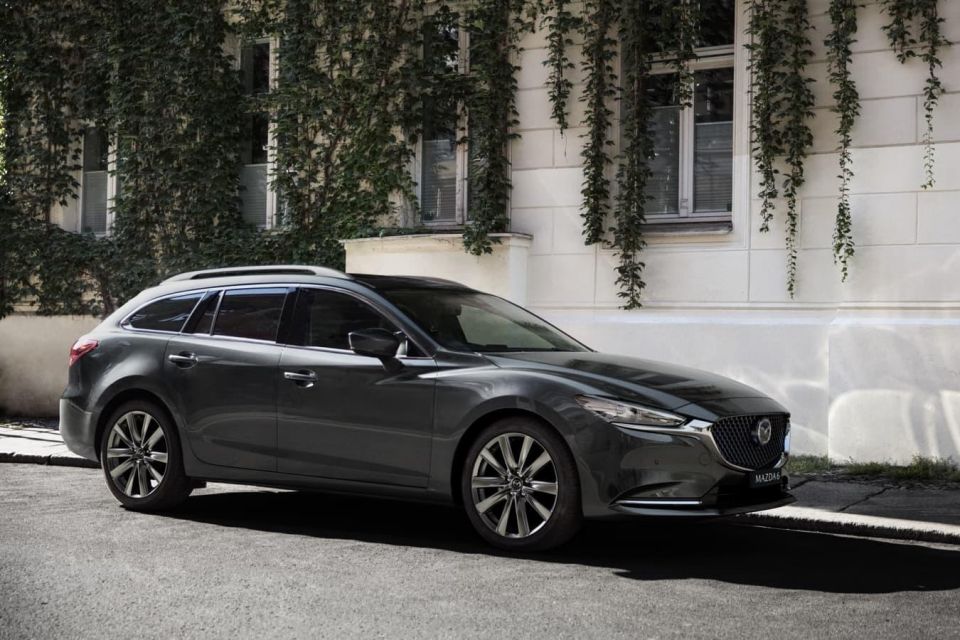
It’s unclear for how much longer the Mazda 6 will be around. It’s the oldest model in the dwindling mid-sized passenger car segment in Australia and one of the oldest vehicles on the Australian market overall.
It was launched late in 2012 but was the recipient of a fairly substantial facelift in 2018. The next oldest in its segment is the Volkswagen Passat, launched locally in 2015.
While it’s outsold considerably by the Toyota Camry, the Mazda 6 is typically Australia’s second best-selling mid-sizer in the non-premium market. Its segment has been hollowed out in recent years, with the likes of the Ford Mondeo, Kia Optima and Subaru Liberty all being discontinued.
MORE: Everything Mazda 6
Where expert car reviews meet expert car buying – CarExpert gives you trusted advice, personalised service and real savings on your next new car.
William Stopford is an automotive journalist based in Brisbane, Australia. William is a Business/Journalism graduate from the Queensland University of Technology who loves to travel, briefly lived in the US, and has a particular interest in the American car industry.


Andrew Maclean
3 Months Ago
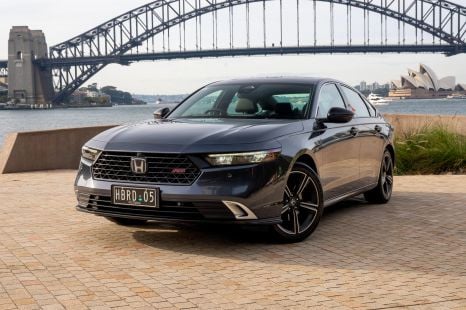

Andrew Maclean
2 Months Ago
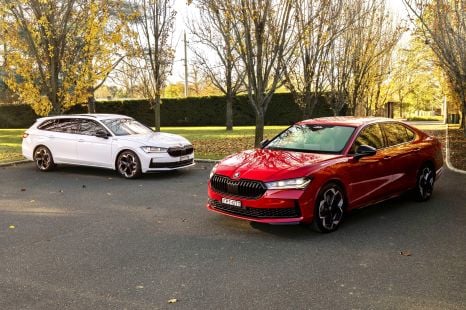

Max Davies
2 Months Ago
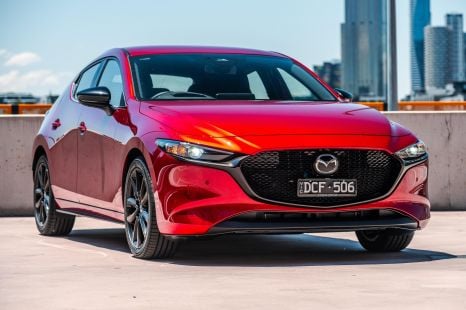

Josh Nevett
2 Months Ago


Josh Nevett
1 Month Ago


James Wong
1 Month Ago